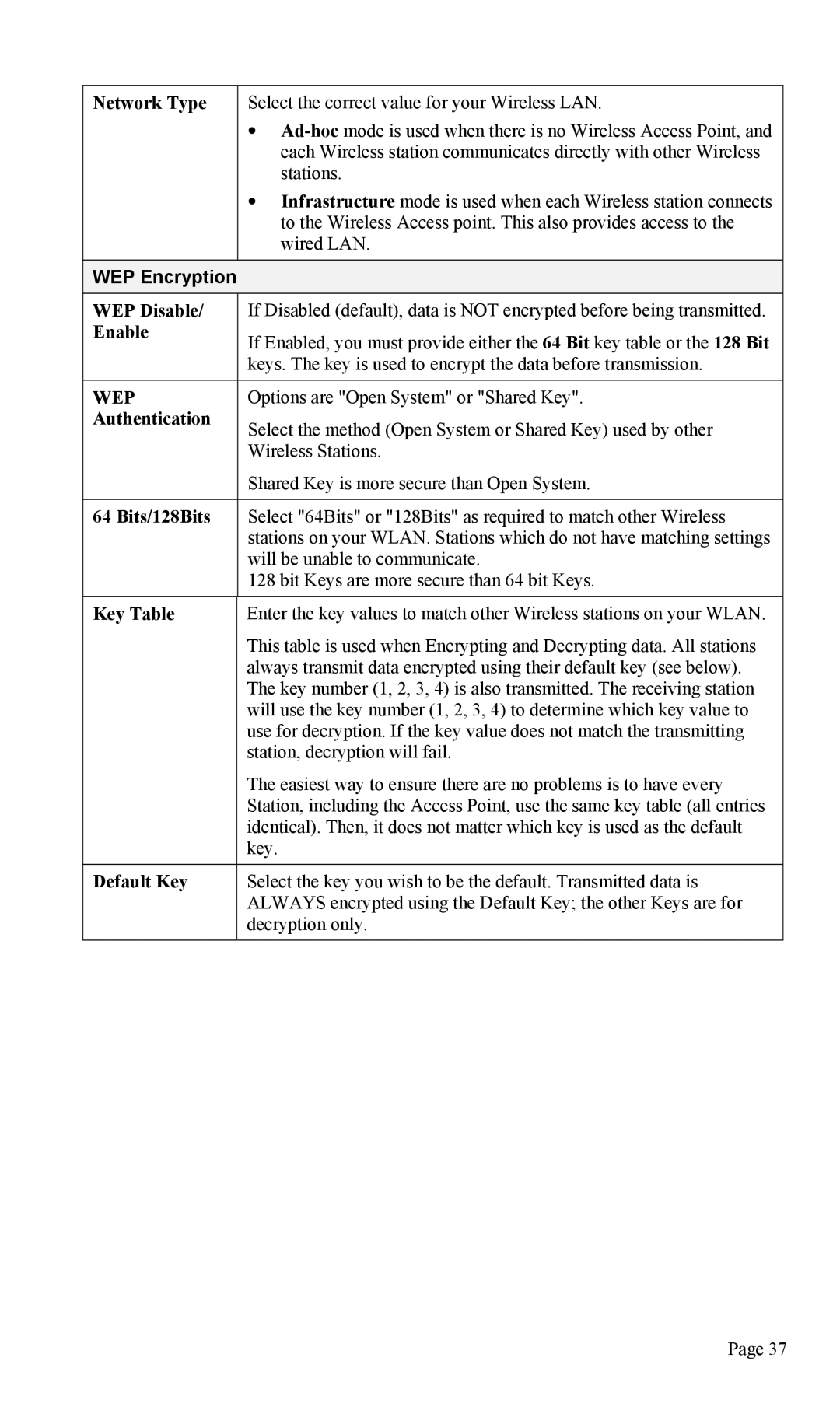
Network Type
Select the correct value for your Wireless LAN.
•
•Infrastructure mode is used when each Wireless station connects to the Wireless Access point. This also provides access to the wired LAN.
WEP Encryption
WEP Disable/ | If Disabled (default), data is NOT encrypted before being transmitted. |
Enable | If Enabled, you must provide either the 64 Bit key table or the 128 Bit |
| |
| keys. The key is used to encrypt the data before transmission. |
|
|
WEP | Options are "Open System" or "Shared Key". |
Authentication | Select the method (Open System or Shared Key) used by other |
| |
| Wireless Stations. |
| Shared Key is more secure than Open System. |
|
|
64 Bits/128Bits | Select "64Bits" or "128Bits" as required to match other Wireless |
| stations on your WLAN. Stations which do not have matching settings |
| will be unable to communicate. |
| 128 bit Keys are more secure than 64 bit Keys. |
|
|
Key Table | Enter the key values to match other Wireless stations on your WLAN. |
| This table is used when Encrypting and Decrypting data. All stations |
| always transmit data encrypted using their default key (see below). |
| The key number (1, 2, 3, 4) is also transmitted. The receiving station |
| will use the key number (1, 2, 3, 4) to determine which key value to |
| use for decryption. If the key value does not match the transmitting |
| station, decryption will fail. |
| The easiest way to ensure there are no problems is to have every |
| Station, including the Access Point, use the same key table (all entries |
| identical). Then, it does not matter which key is used as the default |
| key. |
|
|
Default Key | Select the key you wish to be the default. Transmitted data is |
| ALWAYS encrypted using the Default Key; the other Keys are for |
| decryption only. |
|
|
Page 37
